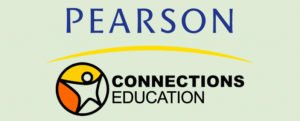A Defense of Cyber Charters
Connections Education: A Defense of Cyber Charters
By Benjamin Herold on November 3, 2016 8:45 AM
Connections Education has heard the mounting criticism of full-time online charter schools, including calls for reform from prominent pro-school-choice organizations.
The company is not happy.
“Candidly, it feels like we’re being thrown out of a lifeboat,” Steven Guttentag, the president and co-founder of Connections, said in an interview with Education Week. “Some of these groups are clearly making a political decision to sacrifice virtual schools and for-profit education management organizations.”
A division of the global publishing giant Pearson, Connections Education last school year helped run 25 full-time virtual schools, including 16 charters. Together, those “partner” schools served an average of more than 54,000 students across 25 states.
Company officials say the schools often perform comparably with traditional schools in the same states, but they acknowledge that Connections-supported cyber charters aren’t immune from the academic woes that have plagued the sector, particularly when it comes to math. And while many for-profit cyber operators have been dogged by reports of corruption or mismanagement, Connections has mostly avoided negative headlines.
The reality of cyber charters is much more nuanced than the public discussion now underway, company officials maintain.
“I don’t see a backlash from families and students,” said Connections’ senior vice president of school operations, Peter Robertson. “They view this as a lifesaver.”
Addressing Student Attendance, Engagement
During a months-long investigation of cyber charters, Education Week spoke extensively with senior Connections officials. The goal was to understand the troubled sector from the perspective of the country’s second-largest operator of full-time virtual schools.
The conversations touched on issues related to:
- Academic performance,
- For-profit management,
- The nation’s patchwork regulatory environment for such schools, and
- The role of private lobbying in the cyber sector’s continued growth
But the primary focus was on how Connections is addressing sector-wide challenges related to student attendance and engagement.
That’s because state regulators and investigative journalists have in recent months begun uncovering disconcerting information about how:
- Infrequently students in some full-time online charters log in,
- Use their schools’ learning software, and
- Complete their lessons and assignments
The result is that cybers as a whole function as a black box:
- Well over a billion taxpayer dollars go in to the sector each year, and
- Overwhelmingly poor results come out
But the public continues to have limited visibility into the most basic aspects of how the schools operate.
Part of the challenge is that few states require cybers to report nuts-and-bolts information on:
- Student logins,
- Software usage, and
- lesson and course completion
Exactly what types of data should be made public remains a source of contention.
But Connections officials express agreement with cyber-charter critics on one thing:
Trying to apply brick-and-mortar accountability models to virtual schools ends up creating headaches for everyone.
“We report the data that states ask for,” said Robertson, the company’s school operations chief. “Even if it doesn’t make sense.”
How the Company Measures Success
A big problem, Connections officials say, is that few people have bothered to ask cyber school leaders and operators how they are thinking about student attendance and engagement.
Matt Wicks, the company’s vice president of data analysis and policy, said the first thing to understand is that you might not know as much as you think about attendance in a regular neighborhood school.
For example: Does a student’s physical presence inside a brick-and-mortar classroom really indicate that he or she is engaged and learning?
The second point Connections officials make is that there’s not yet any consensus on which state-level approach to tracking online attendance and engagement is best.
 Internally, the company has developed its own system, in addition to what it is required to report in each state.
Internally, the company has developed its own system, in addition to what it is required to report in each state.
In response to a request from Education Week, the company provided data on how the 25 schools it supports perform on Connections’ own metrics related to attendance and engagement.
Not included in the information the company provided:
The percentage of students at full-time online Connections schools who log in each day or week.
Company officials claimed logins are not a metric they regularly monitor. In part, they said, that’s because they don’t believe it’s useful information for teachers and administrators. There are also technical challenges, they said, as well as some anxiety about how regulators might use such information.
On attendance, Connections schools start by asking each student’s “learning coach,” typically a parent, to log the number of hours the child spends on schoolwork each day. Last school year, coaches across the Connections network reported an average of just over five instructional hours per day for their children, according to data provided by the company.
Such self-reported, manually entered information is generally regarded as less reliable than logs generated by software programs themselves, which the company did not provide.
When questioned about how meaningful self-reported attendance data are, Connections officials pointed to the company’s internal verification system, through which teachers can monitor whether the number of instructional hours logged is consistent with the number of lessons students have actually completed.
But just 2 percent of self-reported attendance records were adjusted as a result of that verification process last school year, according to the company’s data.
Ultimately, Connections calculates an overall attendance rate by:
Dividing the total number of instructional hours logged at a given school (after adjustments) by the minimum number of instructional hours required in that state.
On this internal metric, Connections-supported schools frequently report monthly attendance rates well over 100 percent.
Prioritizing the ‘Participation’ Metric
Even Connections officials say they don’t put much stock in those figures.
Instead, they’re more concerned with a metric they call “participation.”
It’s determined by comparing the number of lessons a student has actually completed with the number of lessons he or she should have completed at a given point in time.
Across Connections-supported schools, reported monthly participation rates range from a low of 83 percent to a high of 144 percent. A rate greater than 100 percent would indicate that students are working ahead, which tends to happen early in the school year, company officials said.
While this metric may be useful for internal decision-making, it’s difficult to use such information to glean much about the overall effectiveness of Connections-supported schools. That’s because the figures provided by the company only include active students who have not withdrawn or dropped out.
And the third big metric used internally by the company is related to its system for identifying and intervening with students who have fallen behind.
The specifics vary from state to state and school to school. Generally speaking, Connections-supported schools look at a variety of factors, from:
- Attendance
- Participation
- How recently each student interacted with a teacher
based on those data, students are placed in one of three status levels: “on track,” “approaching alarm,” or “alarm.”
Students in the middle tier are targeted with supports and interventions, while students in “alarm” may face sanctions, including possible truancy proceedings.
Across all Connections-supported cyber schools, about 63 percent of students are “on track,” about 17 percent are in “approaching alarm,” and about 18 percent are in “alarm,” according to data provided by the company. (The remaining 2 percent of students are considered “exempt” from the escalation criteria, generally in accordance with an individualized education program.)
The company did not identify individual schools in the data it provided.
Overall, Robertson said, keeping students engaged is a “constant challenge.”
“We’re concerned with anything less than 100 percent,” he said.
Need to Be Accountable
It seems likely that the policy debates surrounding full-time online charters will continue to gather steam.
In October 2015, for example, Stanford University’s Center for Research on Education Outcomes, Mathematica Policy Research, and the Center for Reinventing Public Education released a series of joint reports documenting poor performance and big management challenges across the sector.
This past summer, the Thomas B. Fordham Institute, the National Alliance of Public Charter Schools, the National Association of Charter School Authorizers, and 50CAN all issued recommendations for improving oversight of the sector.
And the debate over cyber attendance continues to make headlines in Ohio, where the state education department is expected to demand repayment of more than $80 million from nine cybers. State officials say audits of the schools’ login and software-usage records found they had been paid for thousands of children who did not complete enough work to be considered full-time students. Leaders from the schools are expected to press their case via court appeals. Connections officials say they are “scrambling” to prepare for a similar audit of the 3,500-student Ohio Connections Academy later this year.
On all fronts, the company says it hopes that lawmakers, policymakers, regulators, researchers, and news outlets will seek the opinions of virtual schools and virtual school operators before officials make new policy.
The devil, said Connections President Steven Guttentag, will inevitably be in the details.
But the bottom line seems increasingly clear.
“Schools should only get paid for students we’re actively working with,” Guttentag said. “There is no argument that we need to be accountable.”
Photo: Connections Education president and co-founder Steven Guttentag, courtesy Connections Education.
Image: Student Engagement at Connections Education-supported partner schools, courtesy Connections Education.

Recent Comments